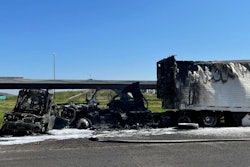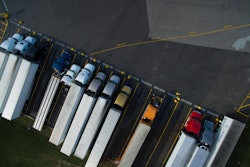Truck drivers face many dangers while on the road. Collisions are often talked about the most as the biggest threat to the safety of drivers, but the leading cause of injuries drivers experience are not from behind the wheel.
According to the Bureau of Labor Statistics, the majority of injuries occur when drivers fall, slip or trip while working on or around their truck. For drivers operating tanker trucks, the risk of experiencing these types of injuries are especially high due to the nature of their job. Every now and then we hear about a serious incident involving a driver that slipped and fell while working on top of their tanker or from handling hazardous material such a fuel or chemicals.
Most of these injuries are non-life threatening but they can cause a driver to miss time from work. There is always the chance of slips, trips and falls or severe muscle strains if you’re not careful. But these types of incidents are completely avoidable if proper precautions take place.
Every carrier should have a list of procedures for each task. Go through the list before starting work. Keep it handy in case you forget. Inspect the area and equipment to identify potential hazards. If you see any issues, report them immediately so they can be dealt with. Trying to work around them will only put you and others at risk.
Use the right Personal Protective Equipment (PPE). For fall protection, wear slip resistant gloves, non-slip boots and a safety vest.
Wear appropriate safety gear such as hard hats and eye protection when hauling fuel or chemicals. In fact, wearing boots that cover your feet and ankles completely is crucial. This will help keep harmful substances from entering your boots and causing harm.
Pay attention to the people and vehicles around you. If you can, try to stay away from busy areas. Be careful where you’re walking and get rid of any loose debris in your path so you don’t trip over it. Follow the proper procedures to connect or disconnect the hose from the truck. This will help avoid any potential hazards, like tripping over the hose.










